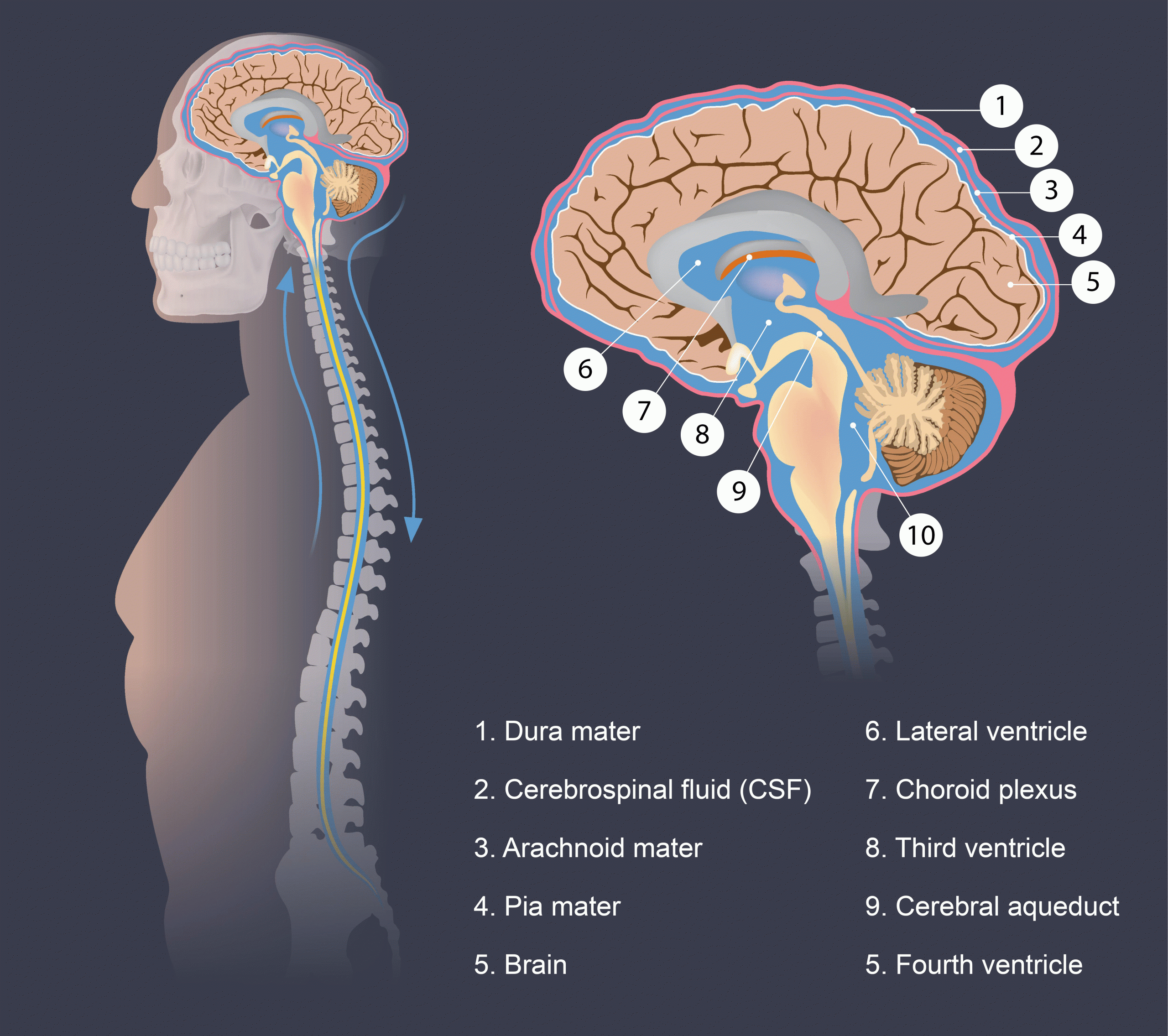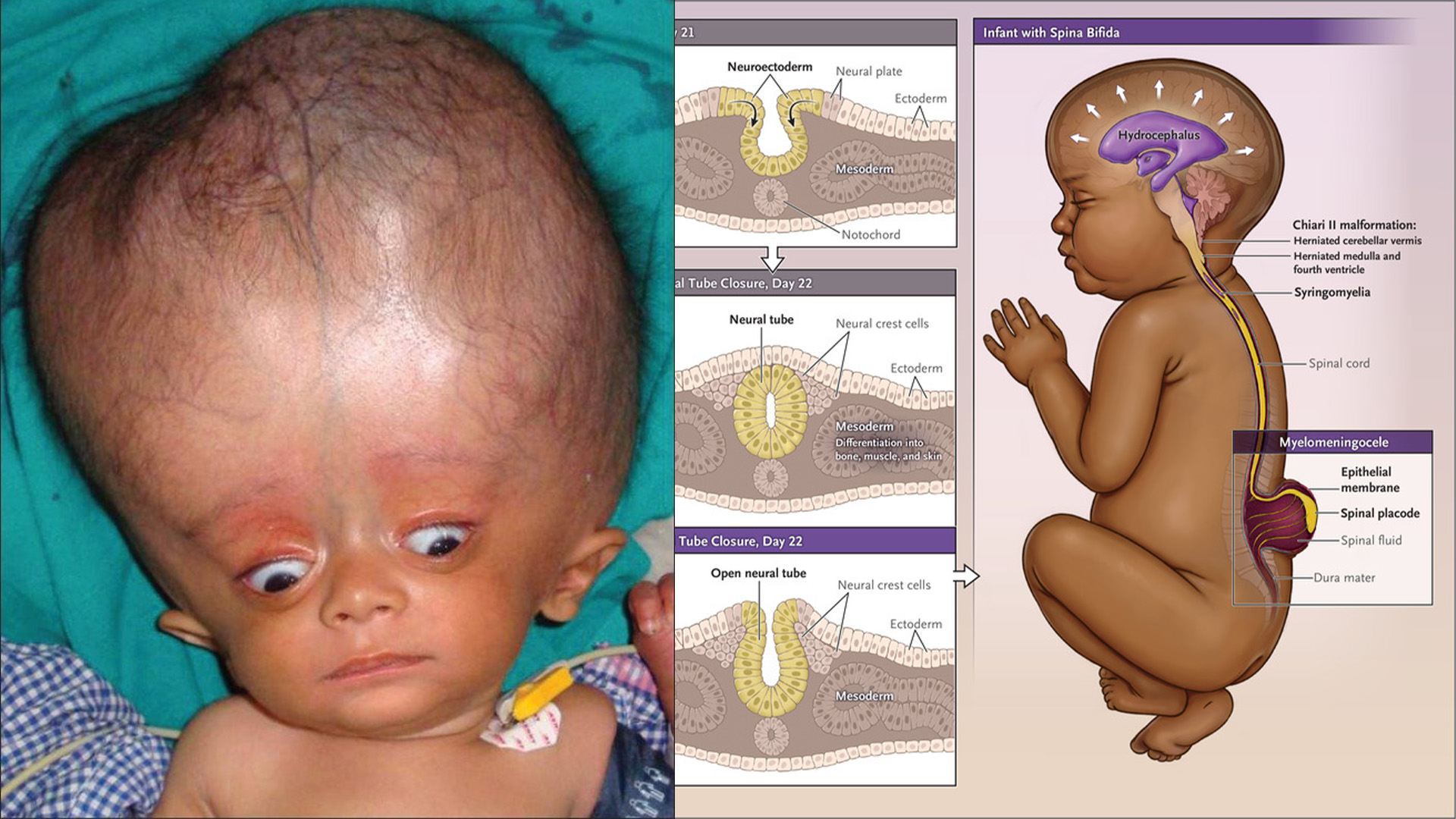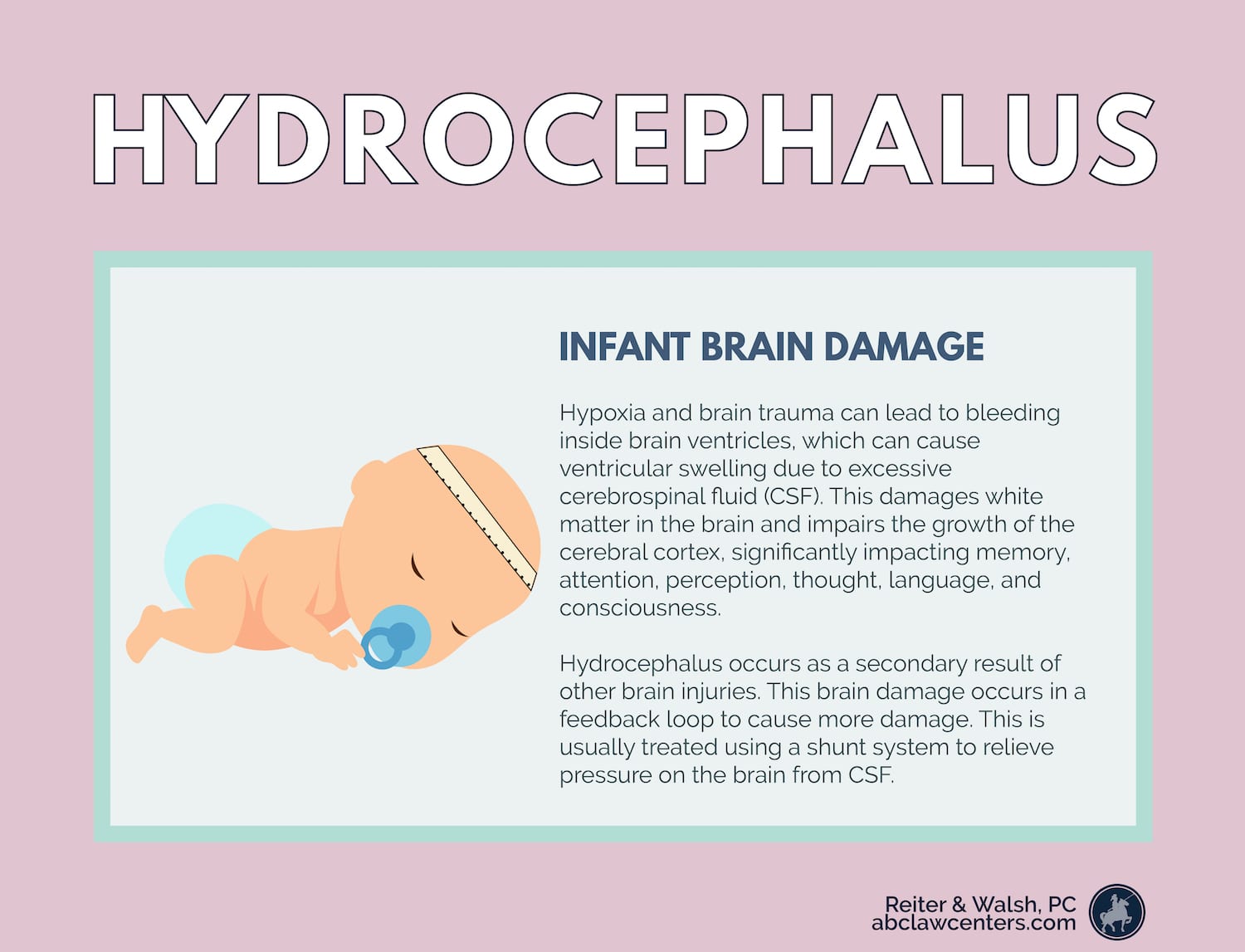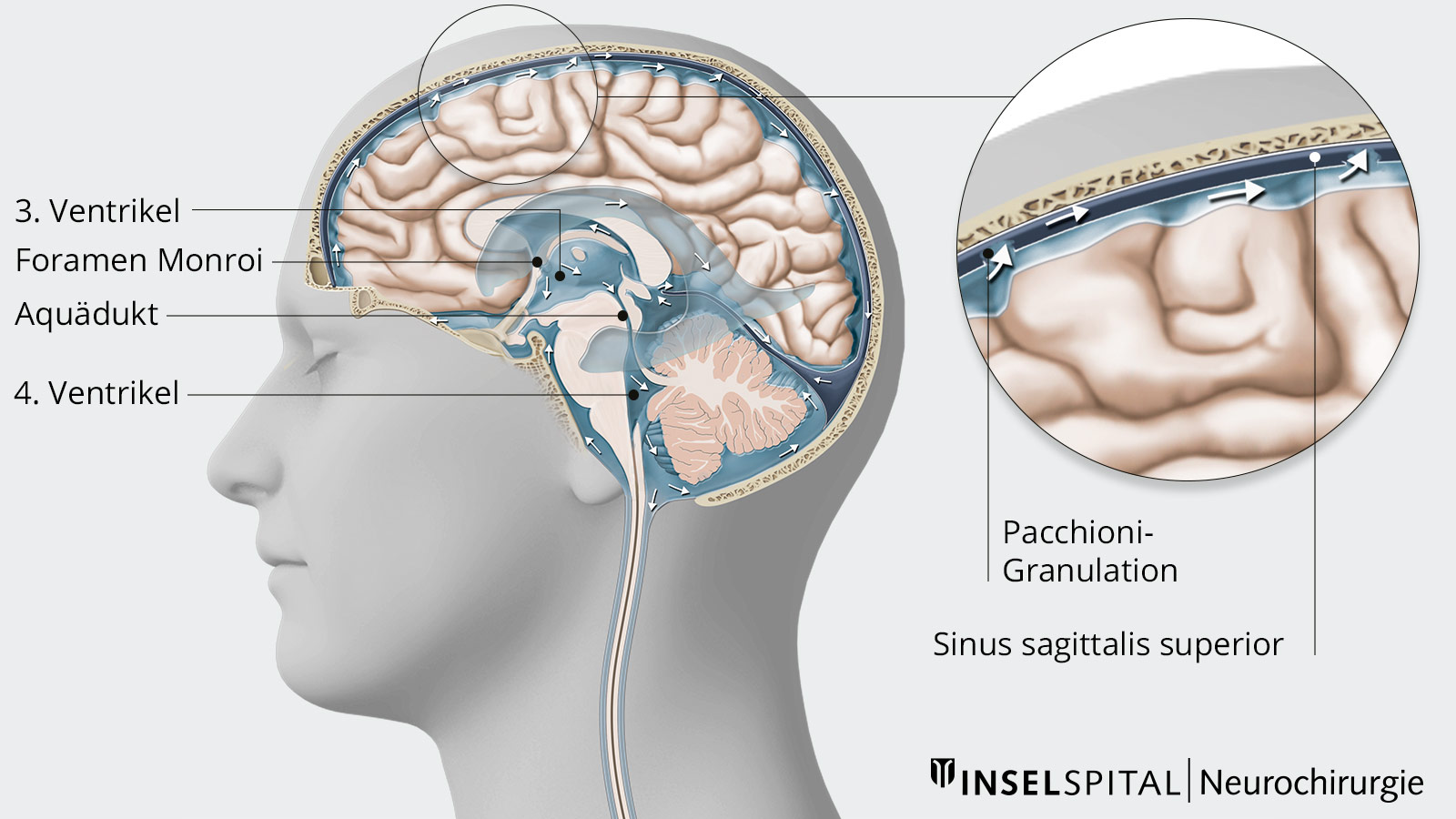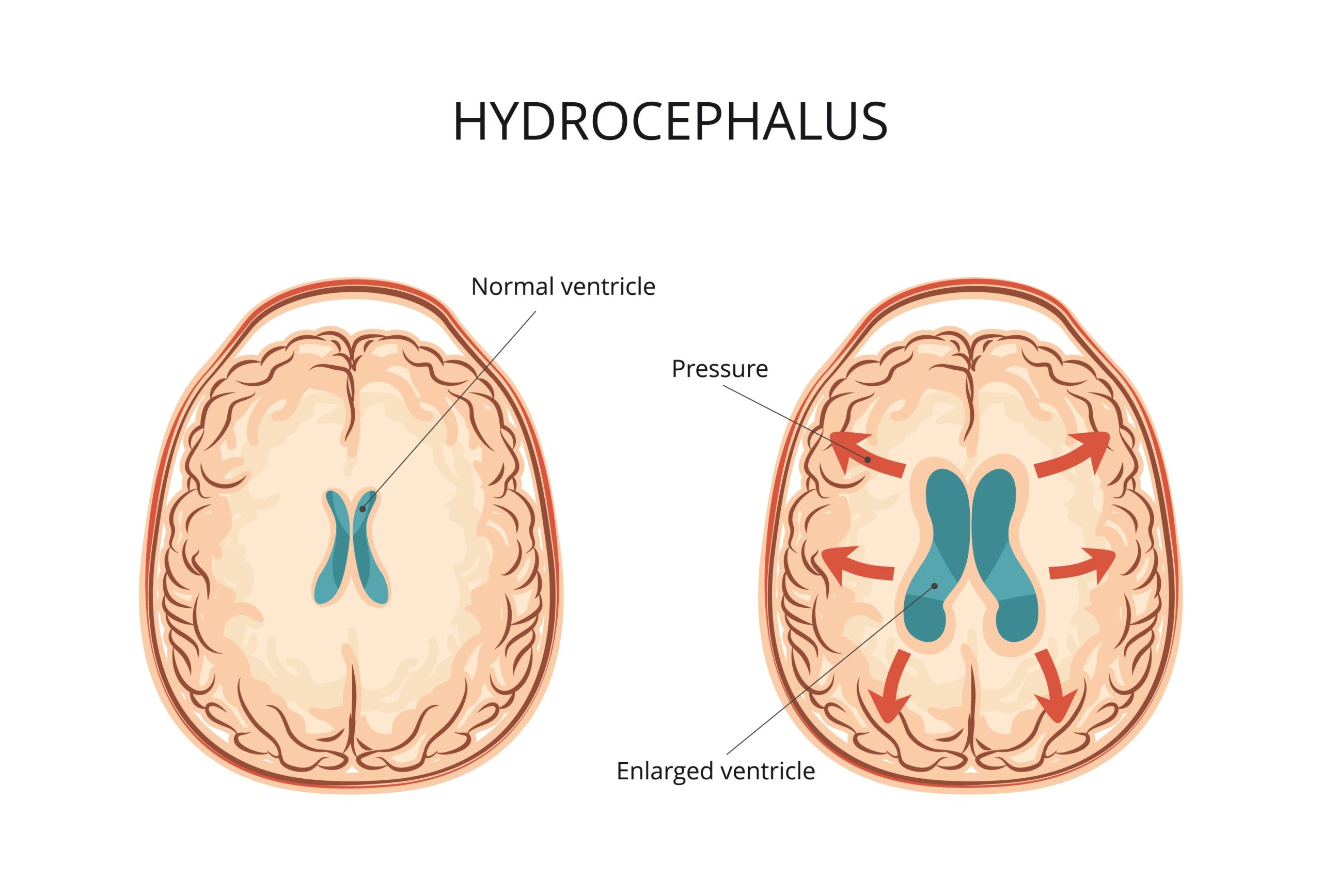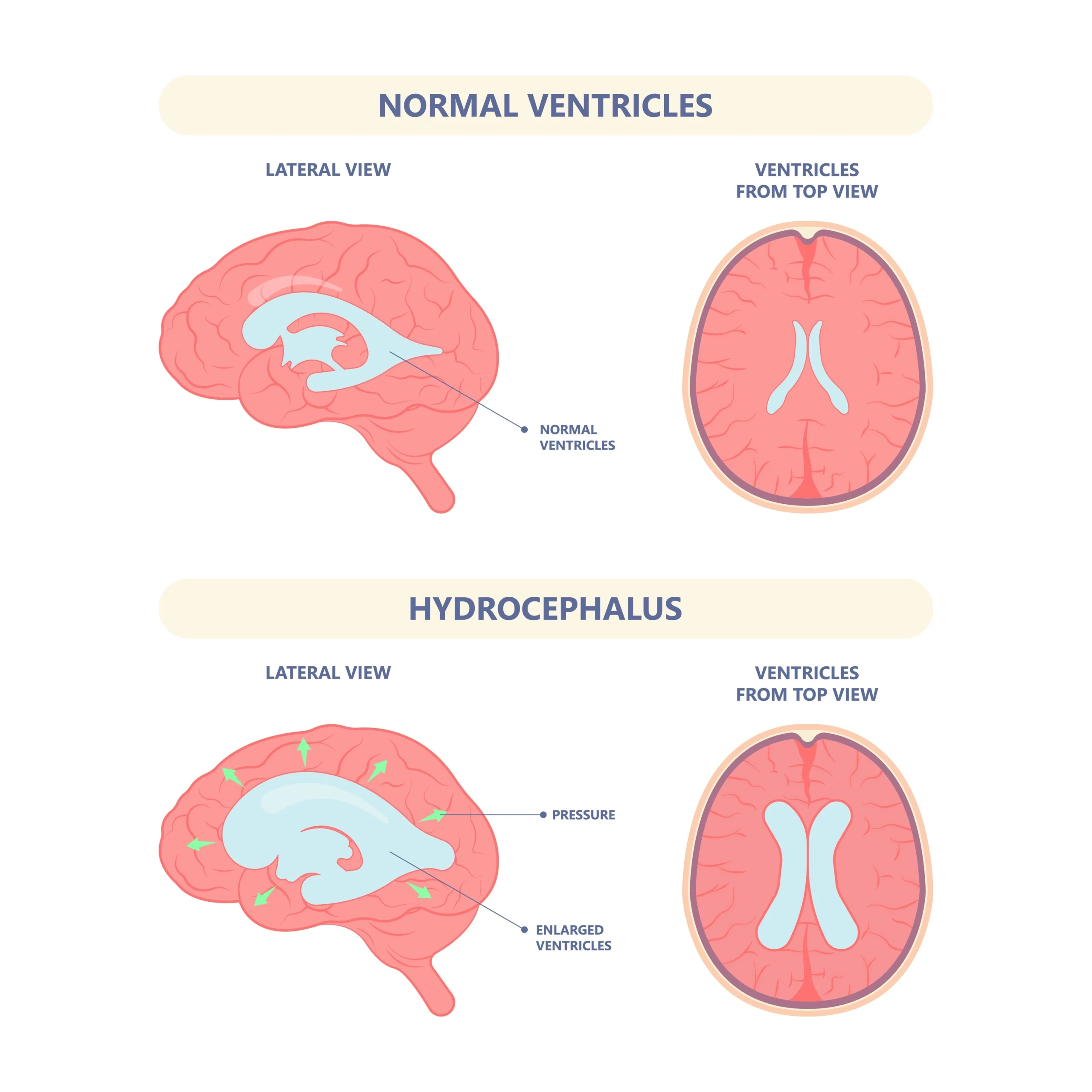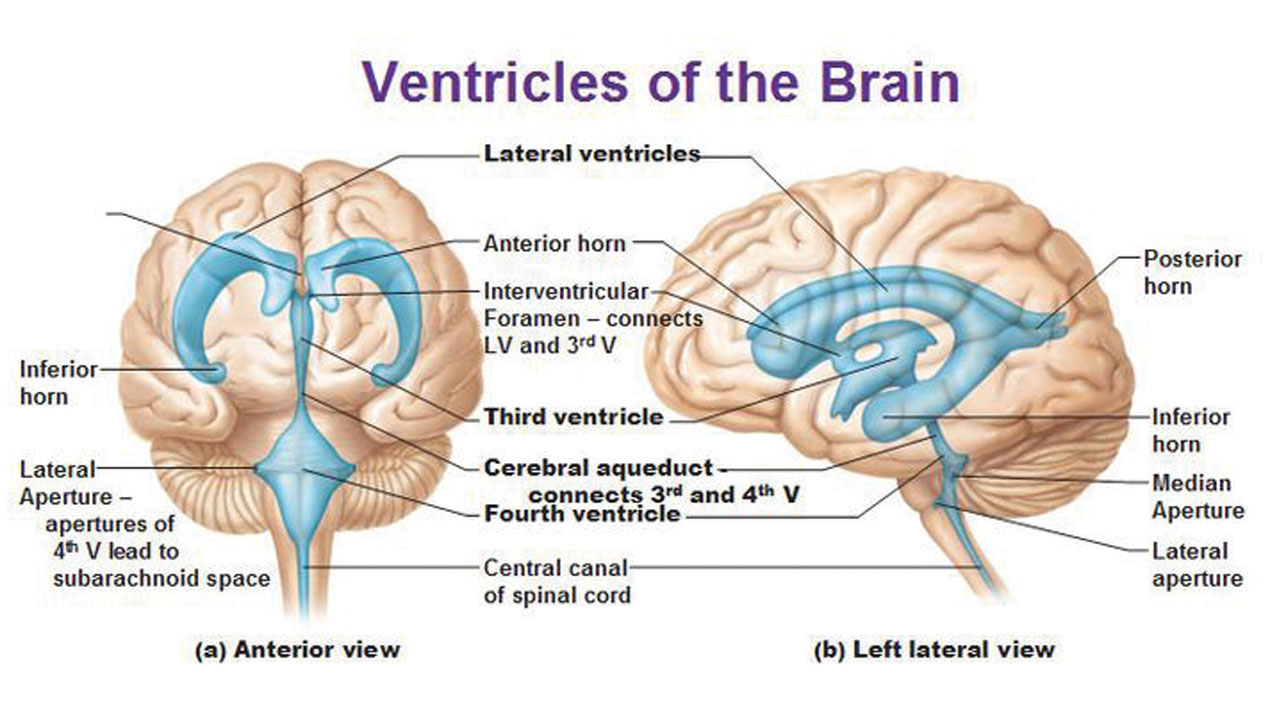
Key facts
- Hydrocephalus is caused by a build-up of cerebrospinal fluid in your brain.
- The most common symptoms are headache, nausea, vomiting and seizures.
- Hydrocephalus can affect babies, children, and adults.
- It is diagnosed by ultrasound, CT scan or MRI scan.
- Hydrocephalus is usually treated with a shunt to relieve pressure in the brain.
What is hydrocephalus?
Hydrocephalus is a condition caused by too much cerebrospinal fluid (CSF) in your brain. Too much fluid creates pressure that can damage your brain.
Normally, CSF is made in your brain. It cushions your brain, provides nutrients, and remove toxins. CSF is removed from around your brain in a cycle.
CSF can build up if:
- your brain makes too much
- it cannot drain properly due to a blockage
- it is not absorbed into the bloodstream
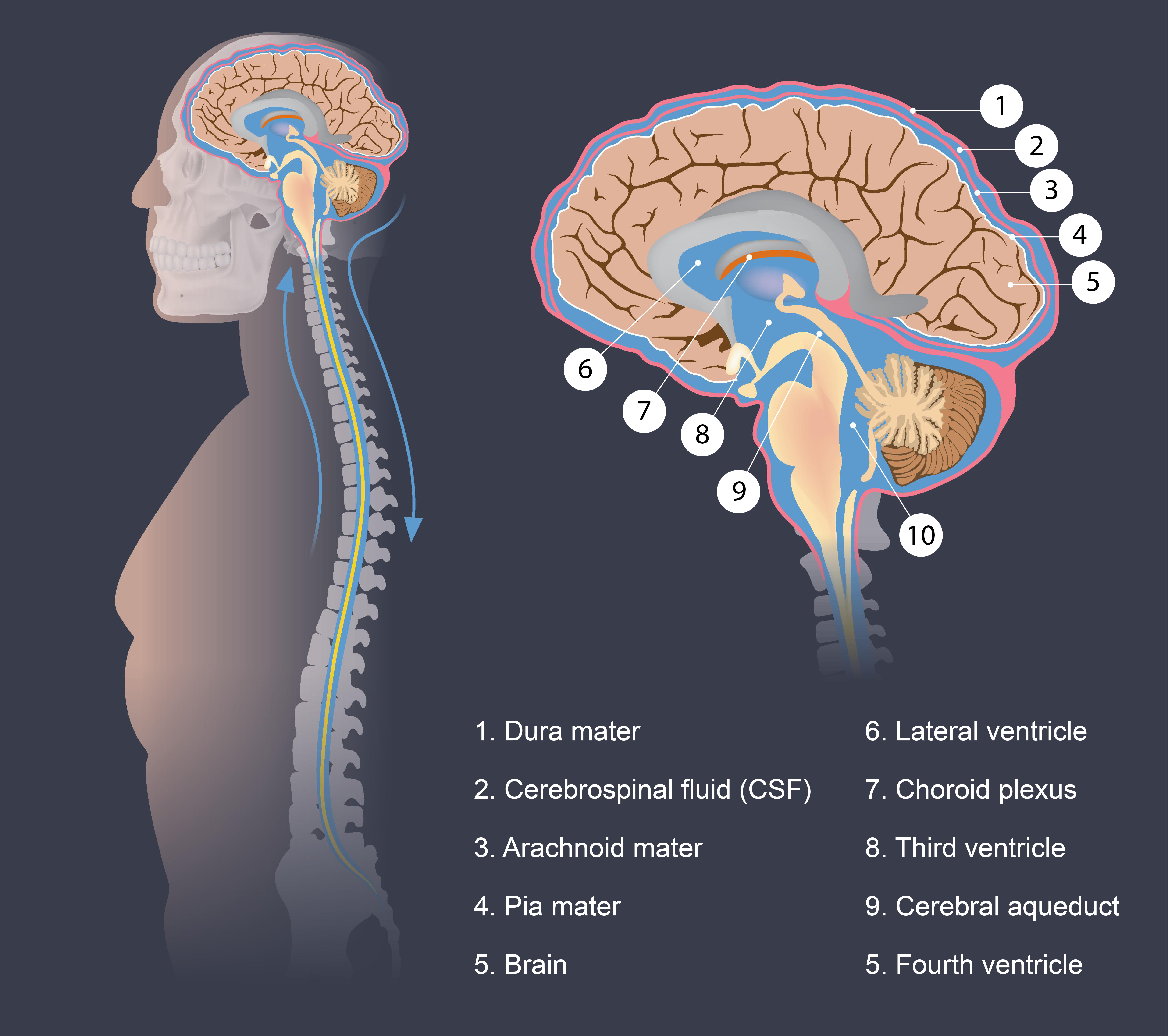
What are the symptoms of hydrocephalus?
The most common symptoms of hydrocephalus are:
- headache
- nausea
- vomiting
- seizures (fits)
For babies, hydrocephalus can also cause:
- increased head size
- bulging or firm fontanelle (the soft spot on a baby’s head)
- poor feeding
- drowsiness or sleepiness
- eye turning inwards
For older children or adults, hydrocephalus can also cause:
- blurred or double vision
- problems concentrating
- coordination issues
- confusion
- incontinence
What causes hydrocephalus?
If a child is born with hydrocephalus, it is called congenital hydrocephalus. This can be caused by genetics, or brain development problems.
Children and adults can acquire hydrocephalus after:
- a head injury
- a brain bleed
- a brain tumour
- meningitis
Another cause of hydrocephalus is spina bifida, a birth defect that affects the spine. Hydrocephalus can develop in children with spina bifida before or after birth.
When should I see my doctor?
If you or your child have symptoms of hydrocephalus, see your doctor.
How is hydrocephalus diagnosed?
If you have symptoms of hydrocephalus, tests can be done to check for extra fluid in your brain. These might include:
- ultrasound
- computerised tomography scan (CT)
- magnetic resonance imaging scan (MRI)
- lumbar puncture
How is hydrocephalus treated?
Treatments for hydrocephalus aim to reduce pressure on your brain. However, not all people with hydrocephalus require surgical treatment.
Hydrocephalus is most commonly treated by a shunt. A shunt is a fine tube that is surgically placed to help drain the CSF.
In about 25% of people with hydrocephalus, an operation called third ventriculostomy is done. This surgery makes small openings to allow your CSF to move between the ventricles of your brain.
Can hydrocephalus be prevented?
Currently there is no way to prevent hydrocephalus. However, treatment can help and prevent it from getting worse.
Complications of hydrocephalus
Sometimes hydrocephalus can put pressure on the optic nerve in your eye. This can cause:
- strabismus (where the eyes aren’t straight)
- gaze palsies (the person can’t move their eyes together upwards)
- nystagmus (a rapid abnormal movement in the eyes)
Children with hydrocephalus may have learning difficulties.
Sometimes shunts can malfunction (stop working properly) due to: an infection, a blockage, or disconnection. In children and adults, this causes tiredness, headache, blurry vision, and loss of consciousness.
If your baby’s shunt stops working properly, they may:
- have a swollen head
- vomit
- be unusually distressed
